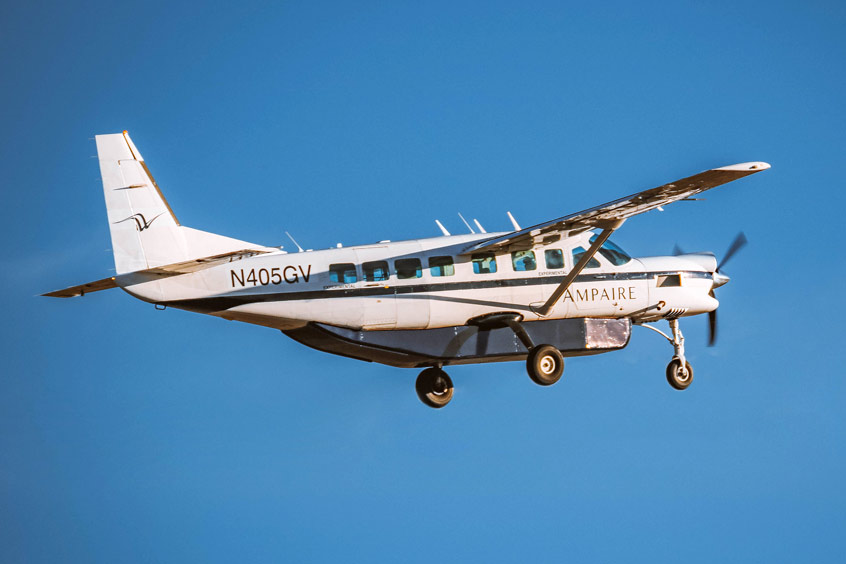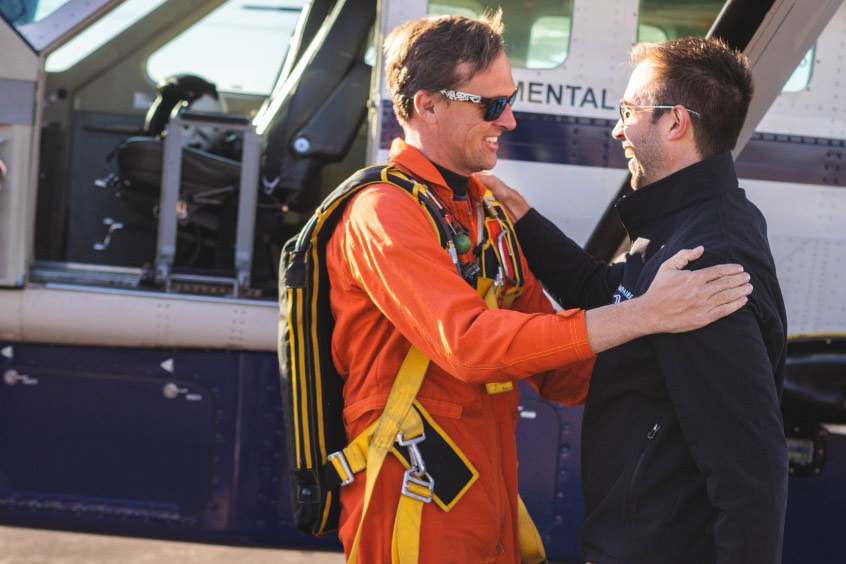Why visit ACE ’24?



Ampaire's Eco Caravan, a nine seat regional aircraft, has made its first flight on a fully-integrated hybrid-electric propulsion system. Ampaire expects it to be the first electrified regional aircraft to enter commercial service following certification in 2024, and the first in a series of larger Ampaire hybrid-electric aircraft that will lead a transition to sustainable aviation.
"Aviation is the hardest industry to decarbonise," says CEO Kevin Noertker. "Fully-electric aircraft are range limited because of the weight and energy capacity of current-generation batteries. Hybrid-electric aircraft, however, can preserve the range and utility of today's aircraft. That is why we are focused on hybrid-electric propulsion for a series of increasingly capable regional aircraft. It's a way for the airline industry to decarbonise more quickly and also to benefit from lower operating costs."
This landmark achievement adds momentum to a programme that has attracted key customers and programme participants in recent months. In October, the company announced a relationship with Air France Industries KLM Engineering and Maintenance (AFI KLM E&M) for a range of worldwide maintenance service and support activities. Also last month, Ampaire received an order from Monte, a financier of sustainable regional aviation technologies, for up to 50 Eco Caravans.
"These types of relationships ensure that Ampaire's customers worldwide have compelling financing and leasing support alongside world class maintenance, repair and overhaul support," says Noertker.
The Eco Caravan upgrades the standard Cessna Grand Caravan with Ampaire's integrated propulsion system of a compression ignition engine and an electric engine. A battery pack in a body fairing preserves passenger and cargo capacity for the aircraft.
The first flight was 33 minutes in duration to make initial checks of the propulsion system. With test pilot Elliot Seguin at the controls, the Eco Caravan took off from Camarillo airport north of Los Angeles at 7:49 am PST. It climbed to 3,500 ft at full power, combining power from the combustion engine and electric engine. Seguin then throttled back to a cruise setting, reducing load on both power sources. He spent roughly 20 minutes testing various power settings while studying temperatures and other readings before making a descent and final approach to Camarillo at a low power setting.
"The Eco Caravan propulsion system performed just as expected," says Seguin. "It was smooth and quiet. All temperature and power output readings were normal."
The Eco Caravan reduces fuel consumption and emissions by up to 70 per cent. Emissions are near zero when using sustainable aviation fuel. Cost of operation is reduced by 25 to 40 per cent depending on airline route structure. Cost per available seat mile is near that of driving.
The hybrid-electric aircraft preserves the range and payload capability of the Grand Caravan, and in fact can fly farther than the Grand Caravan with eight passengers. Maximum range is beyond 1,000 miles. The Eco Caravan's range and load hauling capability is in marked contrast to proposed all-electric, hydrogen-electric and even other hybrid-electric designs.
The Eco Caravan can recharge its batteries in flight or at a charging stations on the ground. Because charging infrastructure will be limited for some years, the ability to operate independently of ground charging is critical for preserving the full utility of the Eco Caravan.
The Eco Caravan's propulsion technology is scalable to larger regional aircraft and ultimately to single aisle airliners. Ampaire plans to rapidly roll out more powerful propulsion systems for larger aircraft, following a building blocks approach that will dramatically improve the sustainability of airline operations.
"As proud as we are of the Eco Caravan, we see it as a first step to larger hybrid-electric propulsions systems and ultimately zero-emission systems as energy storage technology advances," continues Noertker.
Ampaire is already working with the FAA to certify the Eco Caravan in 2024 under a supplemental type certificate. The Ampaire approach differs from others in that it does not require a full aircraft certification programme, which can be time consuming and very expensive. The Grand Caravan is already FAA certified. Ampaire will certify it to fly with a new propulsion system.
"Launching hybrid-electric aviation is no simple task, but we have made it easier by upgrading an already certified aircraft," says Noertker. "We will come to market more quickly and allow airlines around the world to begin to gain operational experience with this new type of propulsion. And we will work with them on follow-on models to meet their network requirements."